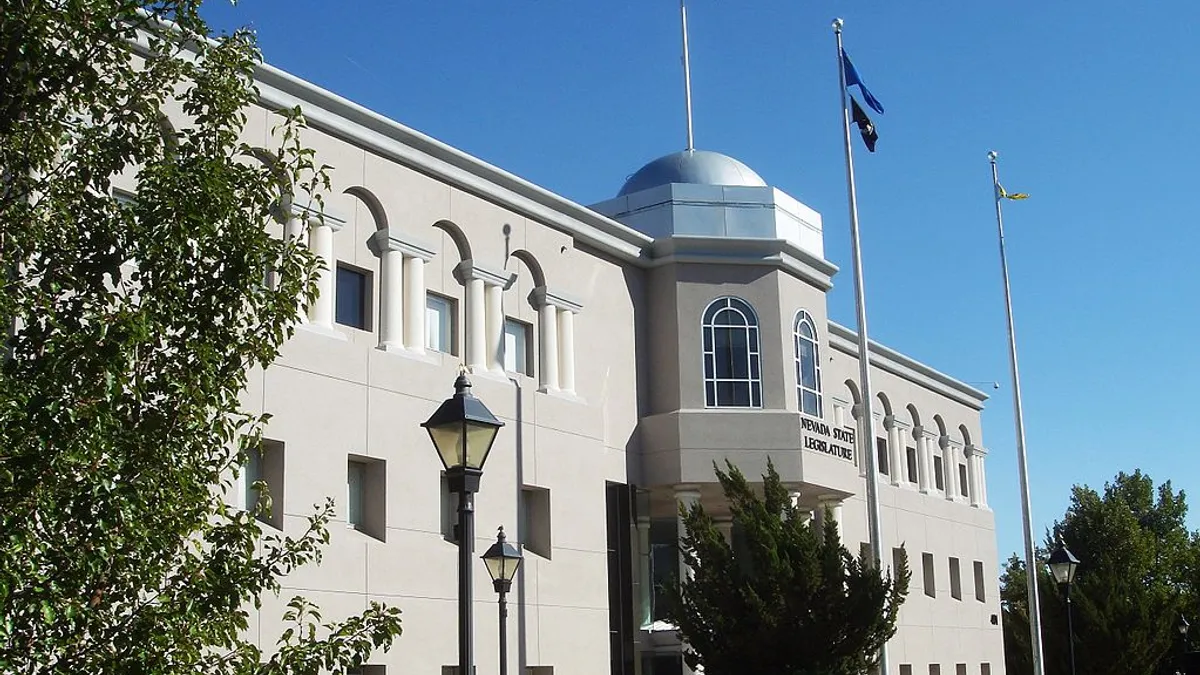Dive Brief:
- Nevada lawmakers on May 23 passed legislation to modernize how electric utility rates are set, directing the Public Utilities Commission (PUC) to develop regulations enabling a performance-based regime.
- Currently, the state's utilities must file rate cases every three years. If signed by Gov. Steve Sisolak, D, NV Energy would instead be able to generate greater earnings by meeting efficiency and clean energy goals, and delivering new services to customers.
- Nevada joins Hawaii in seeking to overhaul how utilities are incentivized, as both states try and incorporate more renewable energy. Nevada last month also adopted a bill requiring the state to generate 50% of its electricity from renewable resources by 2030, with a 100% carbon-free goal by 2050.
Dive Insight:
Nevada lawmakers took a major step towards overhauling electric rates this week, with SB 300 sent to Sisolak's desk on May 28.
The bill "authorizes an electric utility to submit an application to establish an alternative rate-making plan," directs the PUC to adopt regulations regarding those plans, sets deadlines for adopting those regulations and includes a mechanism for earnings sharing with the utility's customers.
It also directs the PUC to "include a plan to educate the customers of the electric utility regarding the alternative rate-making mechanisms in the plan proposed by the utility," and waives requirements for rate plans to be updated every 36 months.
NV Energy, the state's largest utility, supported the legislation.
Regulatory reform could allow customers and the state in general "to leverage and benefit from technological changes and innovative operating practices," Senior Vice President Tony Sanchez III said in filed testimony.
"Achieving the addition of more renewable energy and reducing carbon emissions from the electric sector very well could require innovative regulatory processes that appropriately allocate risk among all stakeholders," Sanchez told lawmakers.
SB 300 was sponsored by Sen. Chris Brooks, D-Las Vegas, who also sponsored the new 50% renewables mandate. In Nevada, renewables make up over 20% of the generation mix, including hydropower, which makes up 3.3%. Solar dominates renewables generation at slightly more than 50%, followed by geothermal power which makes up more than 41%.
Nevada's goal of reaching 100% carbon-free resources by 2050 would put it just five years behind Hawaii, which has also set aggressive renewables targets and adopted performance-based rates.
Under Hawaii's developing rate regime, updated revenue adjustment mechanisms will establish performance and revenue targets for utilities that will be applied over a five-year multi-year rate plan. During that time, there will be no general rate cases, according to the new rules.
Other states are also moving toward performance-based ratemaking, including Minnesota.
Next month, Hawaii will begin designing a set of Performance Incentive Mechanisms for utilities, during the second phase of developing its performance-based rates.















